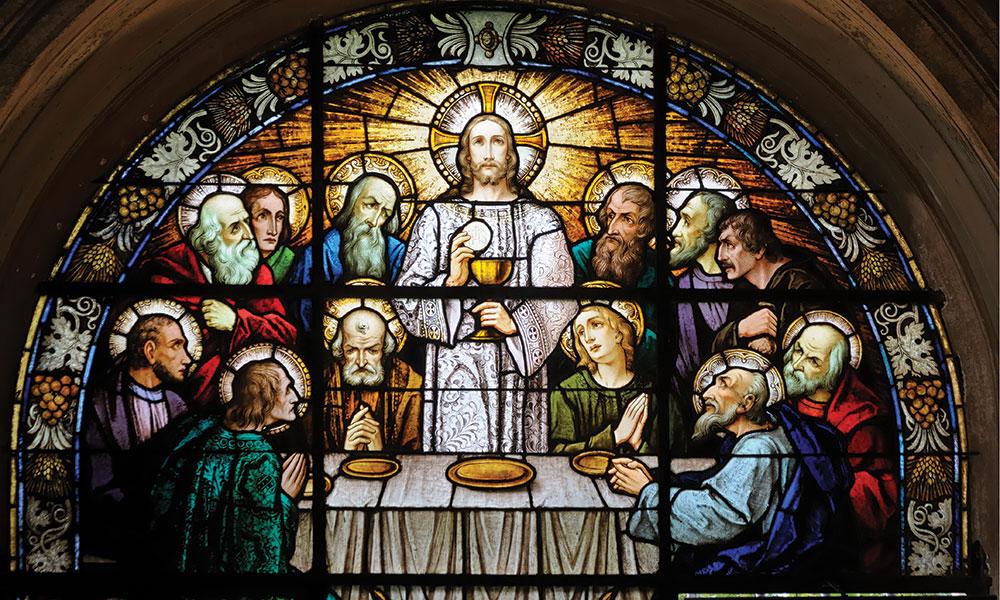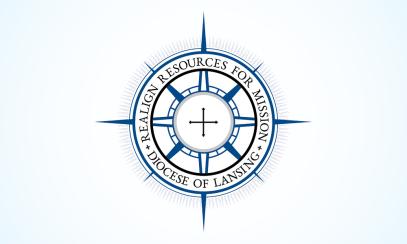
Realign Resources for Mission: Overview
Not surprisingly, the Diocese of Lansing Realign Resources for Mission (RRM) process begins with Jesus Christ. After all, Christianity is primarily a personal encounter with the person of Christ. It is in this experience that we discover our greatest happiness, deepest peace and ultimate purpose in life.
Therefore, the purpose of the Diocese of Lansing is to present Jesus Christ anew to the people in our part of Michigan by forming communities of missionary disciples who can evangelize in their localities in a way that is culturally credible, intellectually coherent and socially compassionate. But how do we achieve this?
“The key to all that we aim to achieve apostolically is as simple as it is profound: Jesus Christ, truly present in the holy Eucharist,” says Craig Pohl, director of the Office of New Evangelization for the Diocese of Lansing.
“The eucharistic sacrifice is the source and summit of both our own interior life and of our collective apostolic endeavors or, as St. John Paul II put it in his great eucharistic encyclical Ecclesia de Eucharistia: ‘The Eucharist makes the Church and, in turn, the Church makes the Eucharist,’” says Craig.
It was with the arrival of Jesuit priests from Quebec in the mid-17th century that Jesus in the holy Eucharist arrived in Michigan.
“The link between the holy Eucharist and the holy priesthood is both beautiful and undeniable,” explains Deb Amato, chief of staff.
“It is only the priest, in persona Christi, in the person of Christ, who can offer the holy sacrifice of the Mass which makes present the holy Eucharist upon our altars. In short: No priest, no Eucharist, no Church, no New Evangelization.”
The rapid evangelization of Southeast Michigan was such that, by 1937, Pope Pius XI felt the need to create the Diocese of Lansing by carving out territory from the Archdiocese of Detroit.
“Over the years, our diocesan boundaries have changed, parishes have been established and some have been merged, schools created and others closed,” explains Michael Andrews, chancellor of the diocese. “In that sense, we’ve always been realigning our resources in order to pursue our unchanging mission to bring the love of Christ to all souls within our diocese.”
“Through it all,” adds Michael, “the one truth that has always impelled and inspired all our apostolic efforts is a deep love for Jesus Christ, truly present in the holy Eucharist – from the earliest missionaries down to our forebears who helped establish this diocese and often had to travel great distances to participate in Sunday Mass.”
And so, in the autumn of 2019, Bishop Earl Boyea established a new 14-member committee to review how the resources of the diocese can be best used to better evangelize the 1.8 million people who live within its boundaries.
Bishop Boyea’s decision to establish the committee has been informed by several key statistics. The number of priests currently in active ministry across the diocese is 88, with 18 eligible to retire, compared to the number of parishes, which is 74. There is also a continued decline in people attending Sunday Mass, with a loss of more than 20,000 people since 2009.
The membership of the committee includes priests, deacons and lay men and women from across the diocese who were nominated by the presbyterate and diocesan staff.
In his commissioning letter to the members of the committee, Bishop Boyea encouraged them to be “bold and innovative,” in re-imagining parishes where “everyone can encounter Jesus Christ, most especially in the Eucharist.” It seems fitting, therefore, that the committee’s emblem, created by designer Michelle Hildebrandt, is a compass with the holy Eucharist at its center.
In recent months, the committee has worked hard amassing data on the spiritual and temporal health of the diocese using various state-of-the-art analytical programs.
“Now, however, the committee would like to hear from parishioners across the 10 counties,” says the committee chair, Father Mathias Thelen, “and so starting on Tuesday, April 21, we will be offering presentations to every parish community across the Diocese of Lansing on the RRM process.”
Each presentation will be hosted by a member of the committee plus, in most cases, a member of staff from the diocesan curia, who will explain the process.
“The key thing, though, is to hear parishioners at these meetings,” adds Father Mathias, “What are your hopes and fears for the future of your parish and our diocese? What do you love about your parish? And what are your recommendations for its future? You tell us.”
The end result of the RRM process will be a final report delivered to Bishop Boyea, with recommendations for the future of the Diocese of Lansing.



